“It’s just like bowling!” Armando Chico launches a giant pumpkin off his shoulder with the ease of an Olympian shot putter, hurling the golden orb down the steep mountainside. Like a pinball in an arcade machine, it bounces off rocks and over shrubs as it speeds downward and smashes into an oak tree, the speckled rind splitting open to reveal stringy, saffron insides. A hundred-strong thunder of pig hooves kicks up a cloud of dust as the hogs scurry over to nab a juicy wedge, the rumble fading into a mellow chorus of hasty chomps and satisfied snorts.
Sitting within the mountain range of Andalusia’s Sierra de Aracena nature reserve on the border of Portugal, Finca Montefrío lies in the heart of southwestern Spain’s dehesa, the local, traditional agro-sylvo-pastoral system. It’s there where a unique fusion of farming, forest management and animal husbandry sees the raising of the renowned cerdo ibérico, or Iberian pig.
Native to the Iberian peninsula, which comprises Spain and Portugal, Iberian pigs are traditionally reared among the natural pasture and holm oak and cork trees scattered across the dehesa. Each October, ripe acorns start to fall from the oaks, marking the beginning of the montanera—the period during which the pigs fatten themselves up on the rich kernels. The season runs through February, by which time these crucial acorn-rich months have laid the foundation for the coveted, cured jamón ibérico for which Spain is so famous.
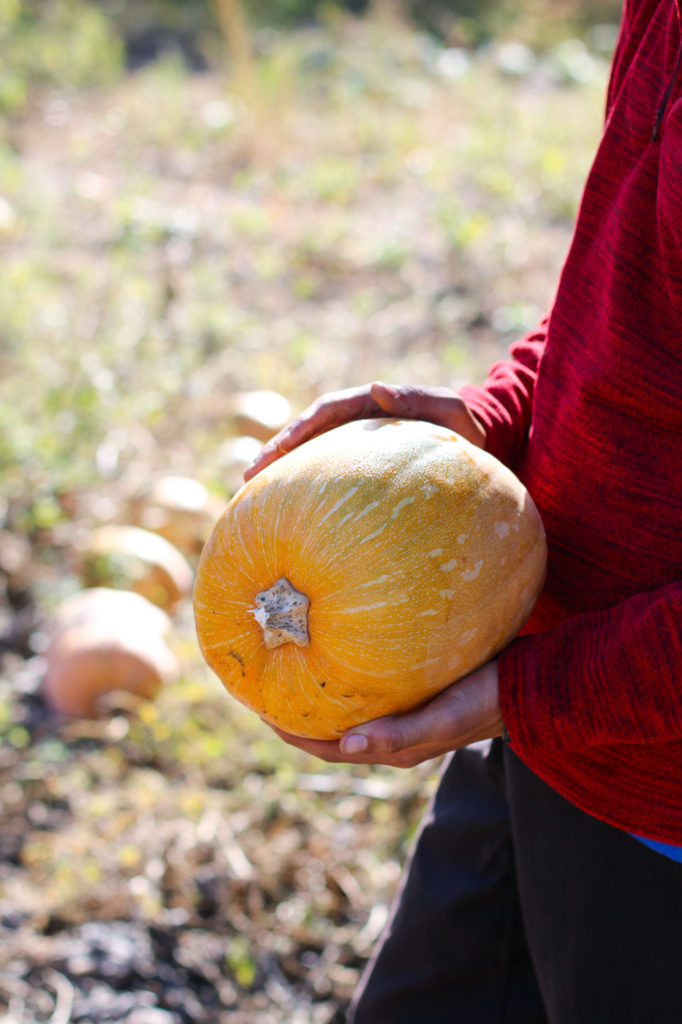
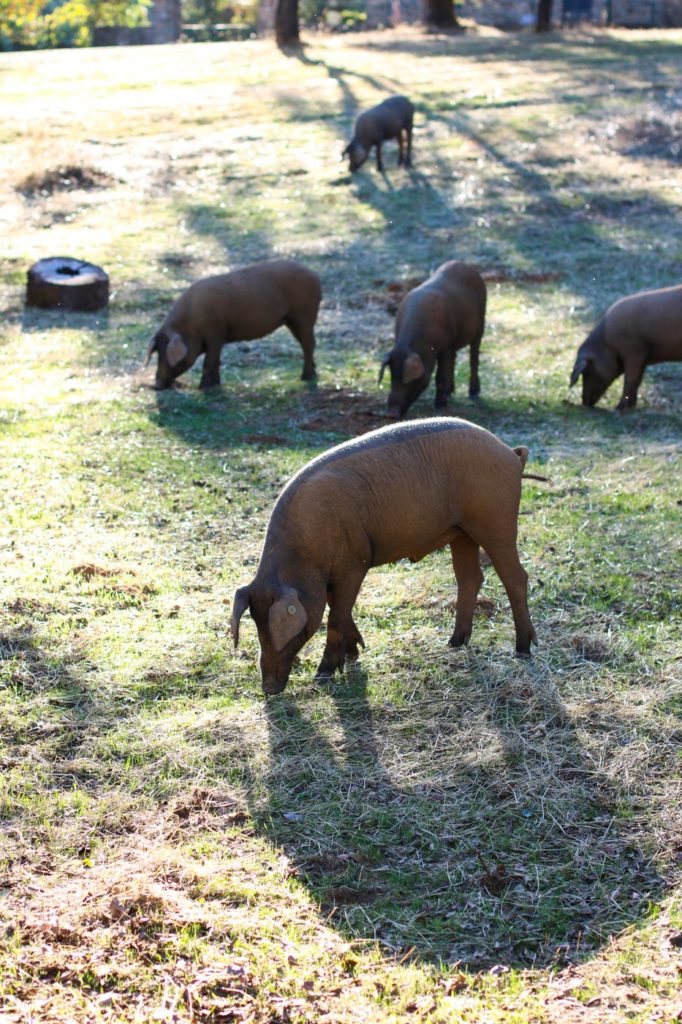
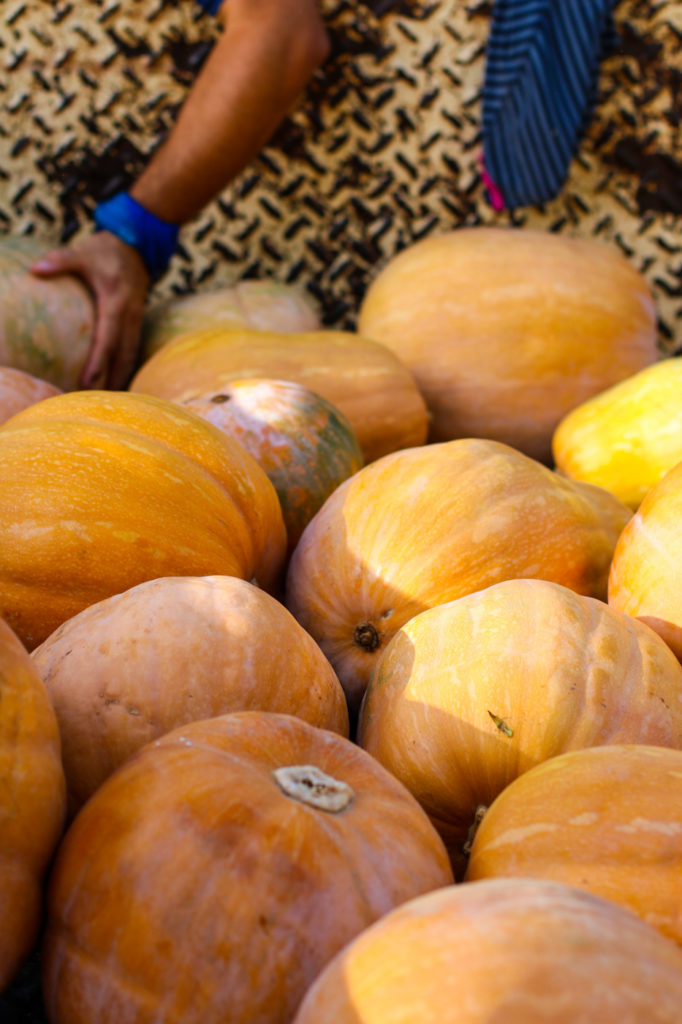
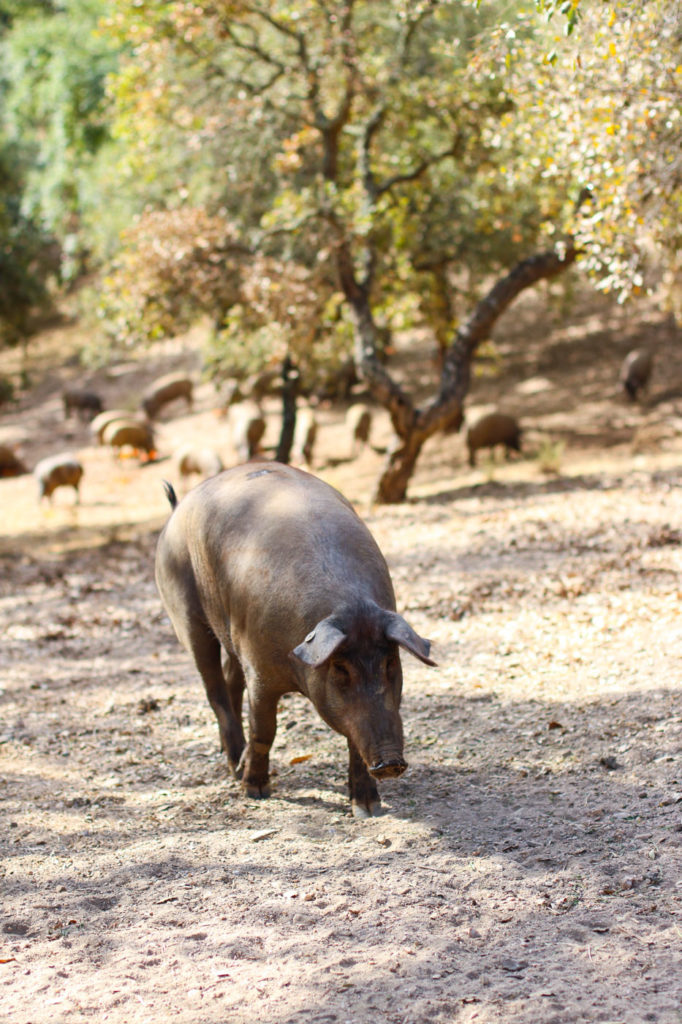
Finca Montefrío is a family affair, run by Armando and Lola Escaño Lopez, and their children, Helena, Natalia and Armando “Chico,” on an eighty-hectare property. From the microbes that live in their soils to the spices that flavor their pork products, no detail on the certified organic estate is spared. While most Iberian pigs eat grains up until the montanera, the lucky ones here enjoy a buffet of those rolling pumpkins (grown in a dedicated field using heirloom seeds that are enriched with a probiotic solution to aid the pigs’ digestion and immunity), along with daily harvested alfalfa plus a custom mix of dried oats, corn and peas milled on-site. “You don’t always want to eat bread; sometimes you feel like something fresh, like salad or fruit. It’s exactly the same for the pigs,” says Armando.
During the month I spend working at Finca Montefrío, days are punctuated by Armando’s stirring calls to the pigs. Each ganadero—referring to a pig farmer—has their own unique warble. Armando’s undulates between what sounds like “eeyore” and “whey” with guttural grunts, heralding that it’s time for the heritage hogs to move from the valley to the mountaintop or back again. Their long snouts, floppy ears, narrow ankles, and dainty black hooves are clear giveaways the Iberian pig is genetically closer to a wild boar than any commercially farmed breed.
In Spain, wild boars were being domesticated as early as the Neolithic period (which began twelve thousand years ago), while texts from the thirteenth century on reference the acorn-feeding of pigs on dehesas in the area surrounding Finca Montefrío. The municipality of Jabugo, which nowadays has a dedicated Denominación de Origen Protegida (DOP, or Protected Designation of Origin), is known for its prized jamón ibérico. “You know it was a really long time ago because there are paintings in caves in this area that already show the animals as pigs, not as wild boars,” Armando explains.
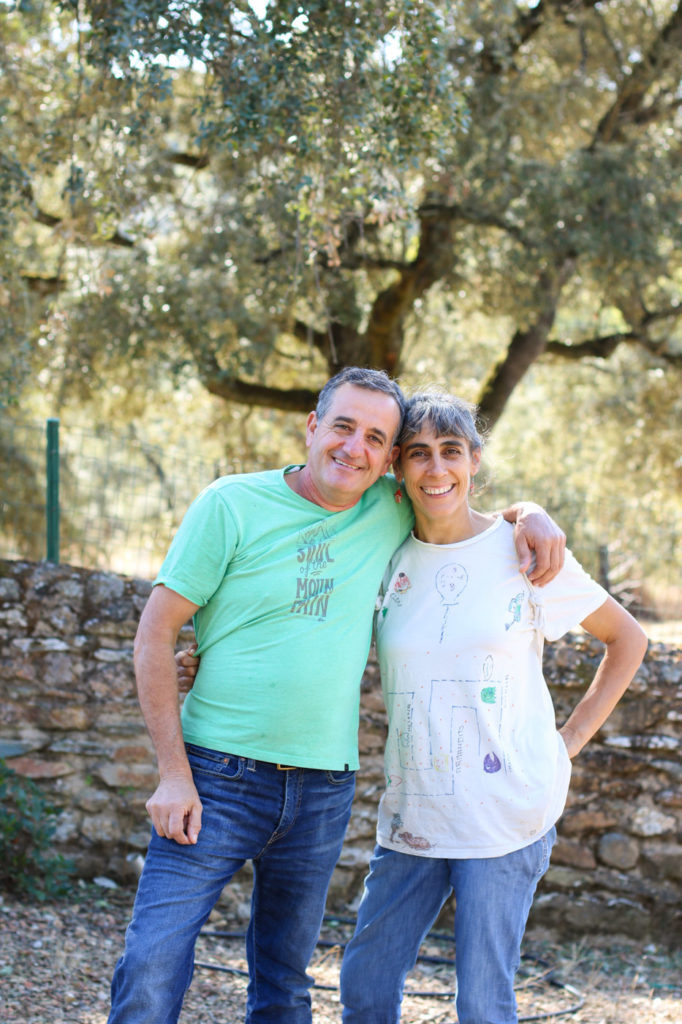
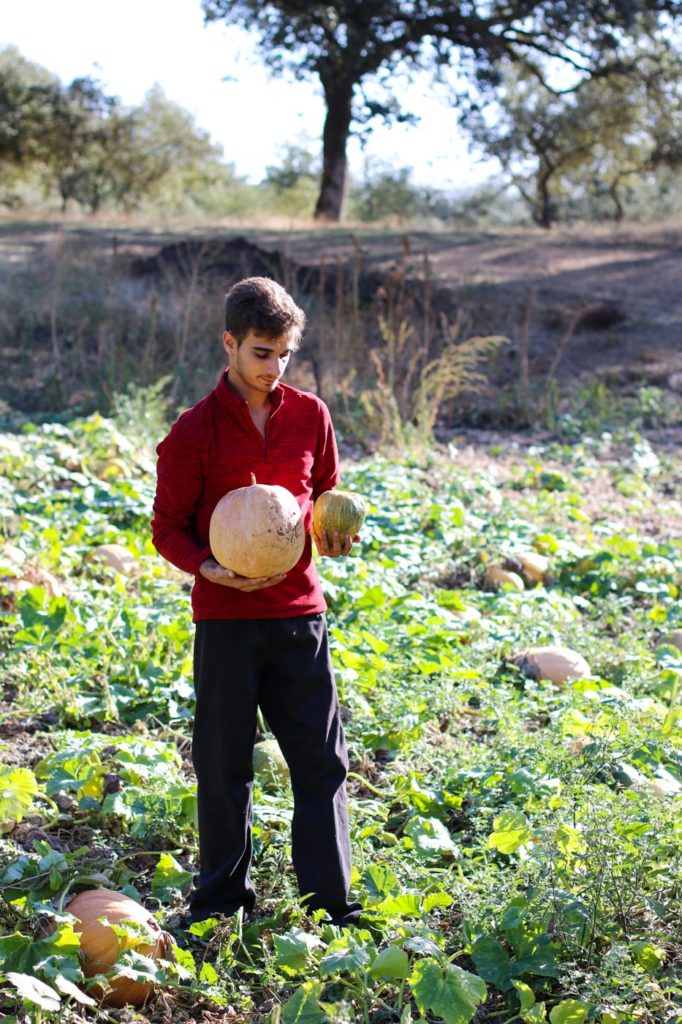
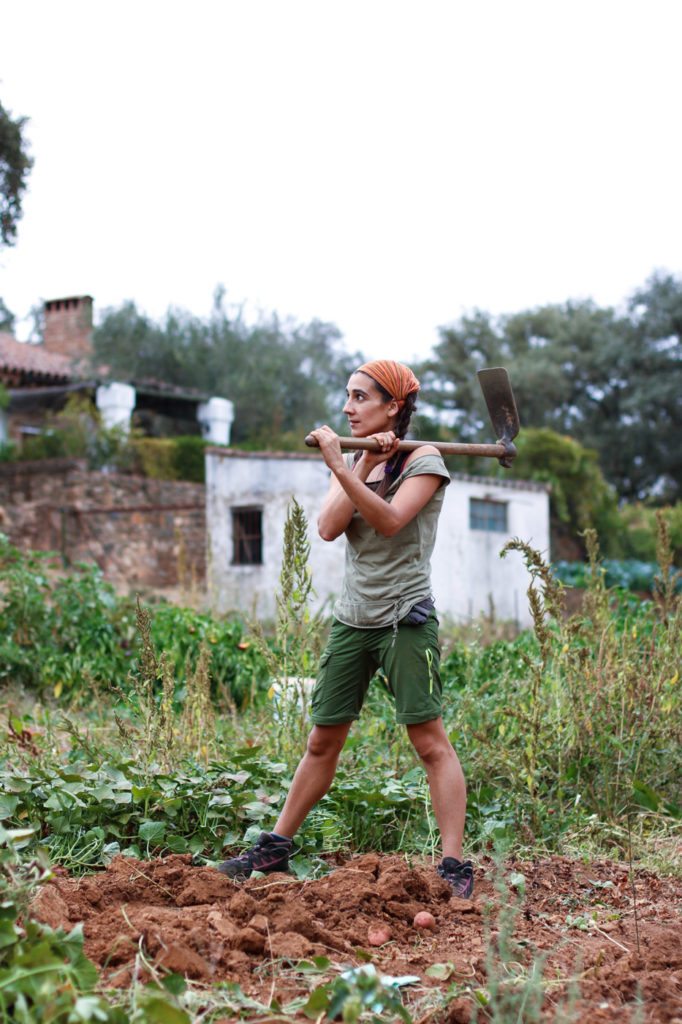
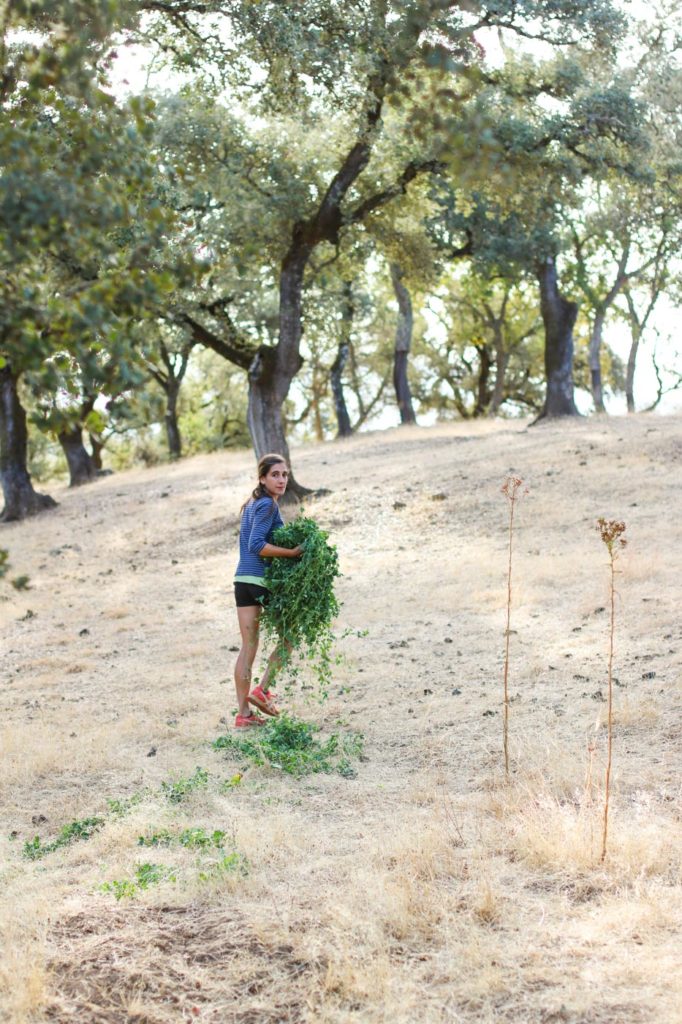
Short legs for traversing uphill and pointed snouts for ferreting out loose acorns are signs the Iberian pig has adapted to the slopes of the dehesa, but they have one physical trait that’s of particular interest to epicures: fat. Iberian pigs are naturally able to gain lots of weight—they pack on some eleven pounds each day during the three-month montanera—and to store higher volumes of intramuscular fat (read: marbling) than other pig breeds. Plus, thanks to their finishing diet of bellotas (acorns) during the montanera, that fat carries very high levels of oleic acid, a monounsaturated fatty acid and the key component in olive oil, lending the meat its signature nutty, sweet taste.
“If you take a spoon of olive oil by itself, it’s too much; but if you pour it over a piece of bread, maybe with a little bit of honey, it becomes really nice,” says Helena. “That’s just like the bellota—it has a lot of carbohydrates, mixed together with the oleic acid, and sweetness.” Coupled with a lengthy rearing period and the workout from hiking those inclines, this makes for ultra flavorsome, silky meat that, when cured under sea salt and aged to become jamón ibérico, is butter-soft due to the low melting point of oleic acid. A slice of true jamón ibérico will drip between your fingers—and none quicker than a translucent sliver of Finca Montefrío’s intensely scarlet goods, peppered with glossy, custard-yellow striations.
In recent years, demand for the esteemed jamón ibérico has outstripped supply, placing pressure on the traditional dehesa system to keep up. Rearing Iberian pigs is longer, slower and far more dispersed than other pig breeds. Iberian pigs are given the top de bellota (acorn-fed) classification in Jabugo, and require a number of specific considerations: they must each have at least half a hectare of dehesa to themselves, they must feed on acorns for at least sixty days before slaughter, they must reach a market weight of roughly 350 pounds, and they can’t be slaughtered earlier than fourteen months old.
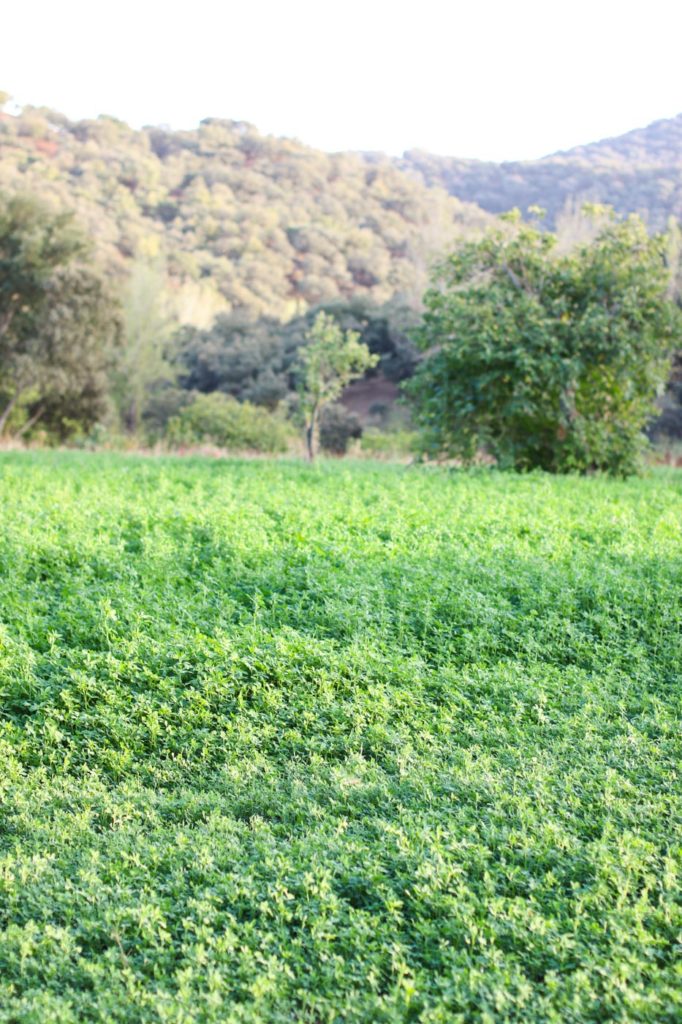
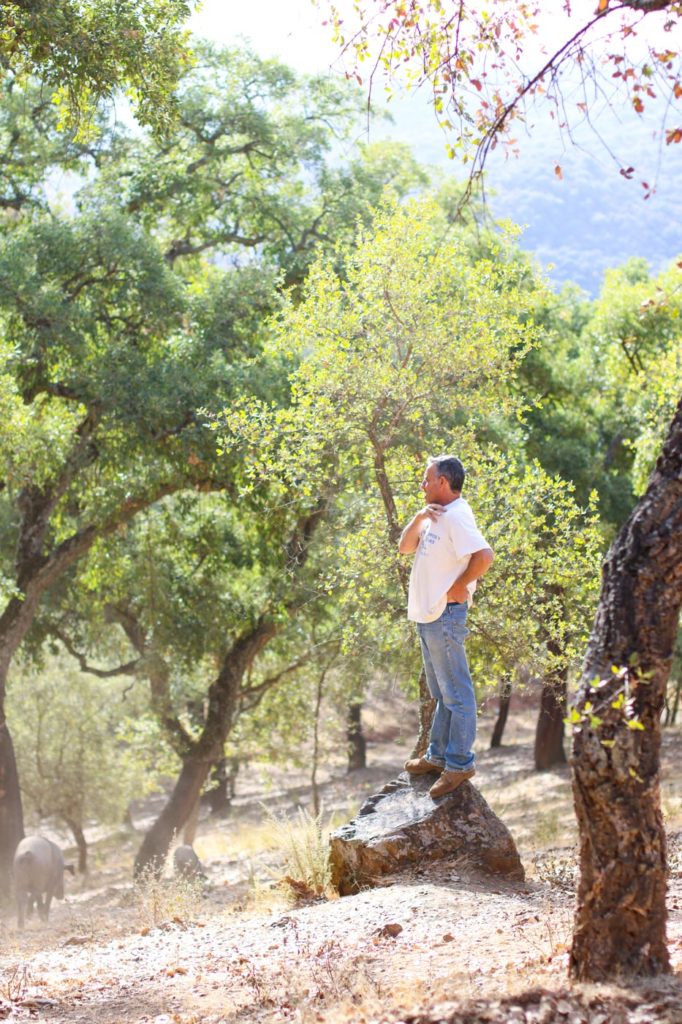

Meanwhile, the free range nature of dehesa farming, which has been proven to positively impact the flavour of jamón, is difficult to replicate. This is likely one reason that of the two million Iberians pigs slaughtered in Spain in 2003, only fifteen percent were acorn-fed outdoors under the montanera; the remaining eighty-five percent were fed a mixed diet in confinement.
Despite strict controls, the term “ibérico” can be confusing. Remember the pigs’ slender pins? “If you can wrap your forefinger and thumb around the ankle of a whole jamón and your fingers touch, then it’s the pure Iberian breed,” Armando explains during a tour of his bodega, or ageing cellar, where rows of Finca Montefrío’s hams are hung to cure. Jamónes are the pigs’ cured hind legs, paletas are the cured front legs, and embutidos are other cuts that are flavoured and bound in a casing, like chorizo, lomo (cured loin) and morcilla (blood sausage).
For the jamónes of Iberian pigs, or their crossbreeds, there are four quality classifications: jamón de bellota 100% ibérico, made from purebred, free-range Iberian pigs fed on acorns; jamón ibérico de bellota, made from crossbred, free-range Iberian pigs fed on acorns (the percentage of Iberian pig breed is stated on the label); jamón ibérico de cebo de campo, made from minimum fifty-percent Iberian free-range pigs fed on both cereals and acorns; and jamón ibérico de cebo, which are minimum fifty-percent Iberian pig breed, commercially raised (not free-range), and fed on cereals.
There are only four zones in Spain legally able to produce jamón ibérico within the DOP system, which regulates high quality food products under EU law. For the DOP Jamón de Jabugo label, where Finca Montefrío is located, there are only around forty producers that comply. Lola and Armando’s jamónes have been consistently awarded the DOP Jamón de Jabugo mark, as well as being deemed the top level of jamón de bellota one hundred-percent ibérico, and also received organic certification.
This trifecta is no easy feat, but Lola and Armando choose a path of tradition—and then some—going above and beyond regulatory requirements to improve the local ecosystem and their animals’ welfare. For example, they provide extra roaming space and a longer montanera than legally called for.
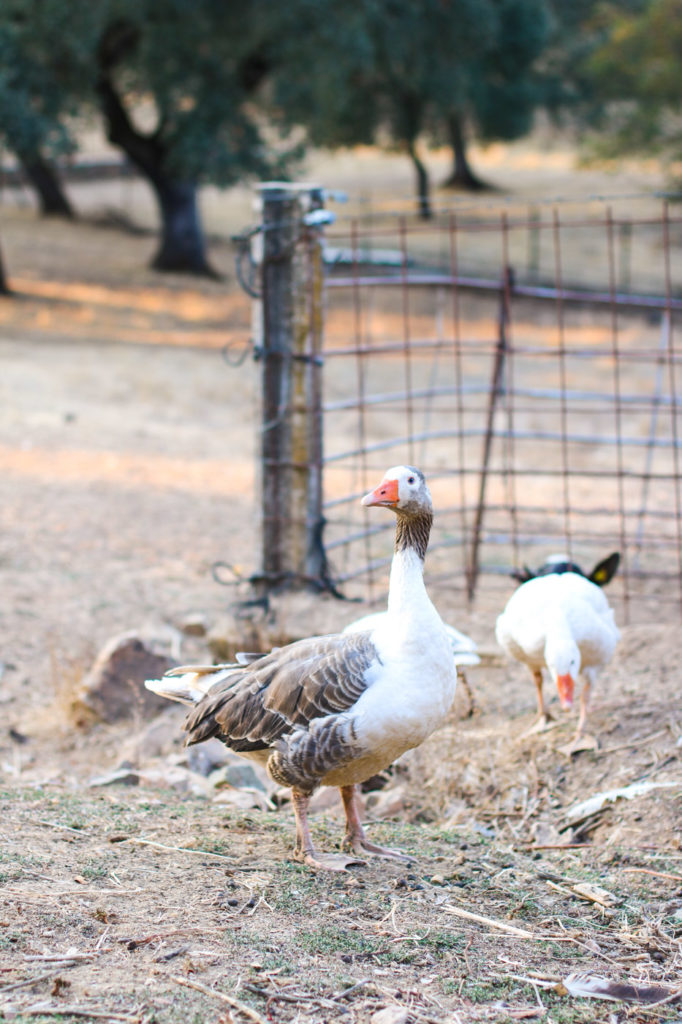
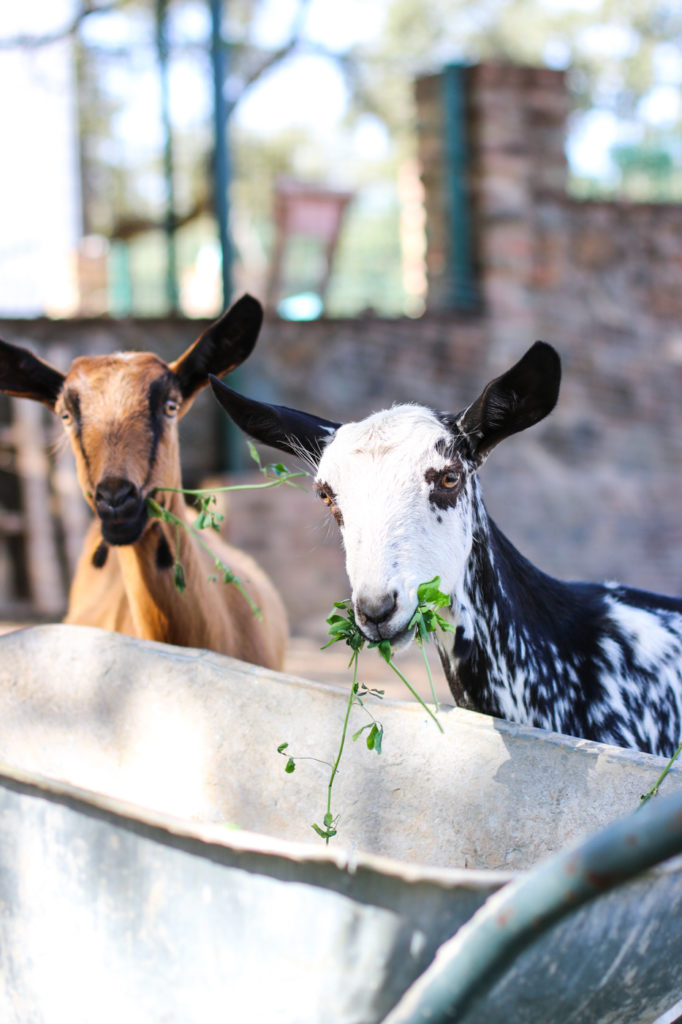

In commercial pig farming, it’s not uncommon to purchase baby animals for raising or to sell raised animals on to food manufacturers. “We manage the full cycle,” says Helena of overseeing the birthing of piglets right through to the production of their jamónes, paletas and embutidos—right down to the very seasoning.
“We wanted everything to taste exactly like what we’d make at home,” Lola says, carrying a crate full of sun-blistered peppers in the permaculture vegetable garden. When she and Armando weren’t satisfied with the taste of the certified organic paprika, dried garlic and herbs available for flavoring their embutidos, they decided to grow their own. It’s just one of so many measures that calls for patience and diligence in the pursuit of quality.
I arrive in October with hopes to experience the famous montanera season, but the days are still a scorching, dry ninety degrees. The acorns should be plump and tumbling down the mountain by now, but the delayed autumn rains are keeping them little and green, clinging to their branches. “As farmers, we take a bet on September,” Helena says of the prospect of post-summer rain. Without it, the fresh pastures don’t arrive, and contingencies must be set in motion to ensure the pigs are well-fed ahead of the montanera. The rhythms of the farm are thrown off. Collecting pumpkins each morning and harvesting alfalfa each dusk shouldn’t still be needed this time of year; but the farm needs to adjust to compensate for unpredictable weather in order to maintain their status and quality of product.
It’s easy to observe the symbiosis between the dehesa and Iberian pigs: the pastures feed them, the acorns fatten them up, their movement and manure stimulate and nourish the soils. To this time-honored scene, Finca Montefrío adds a bold custodianship—respecting tradition and preserving the natural landscape, while also taking active, considered steps to innovate—that anchors an interwoven trinity of land, animal and caretaker.
Standing at the edge of the vast pumpkin patch, Helena inspects a truckload of just-plucked produce for feeding the animals today: “If I had to choose something for my next life, I would be one of my father’s pigs.”





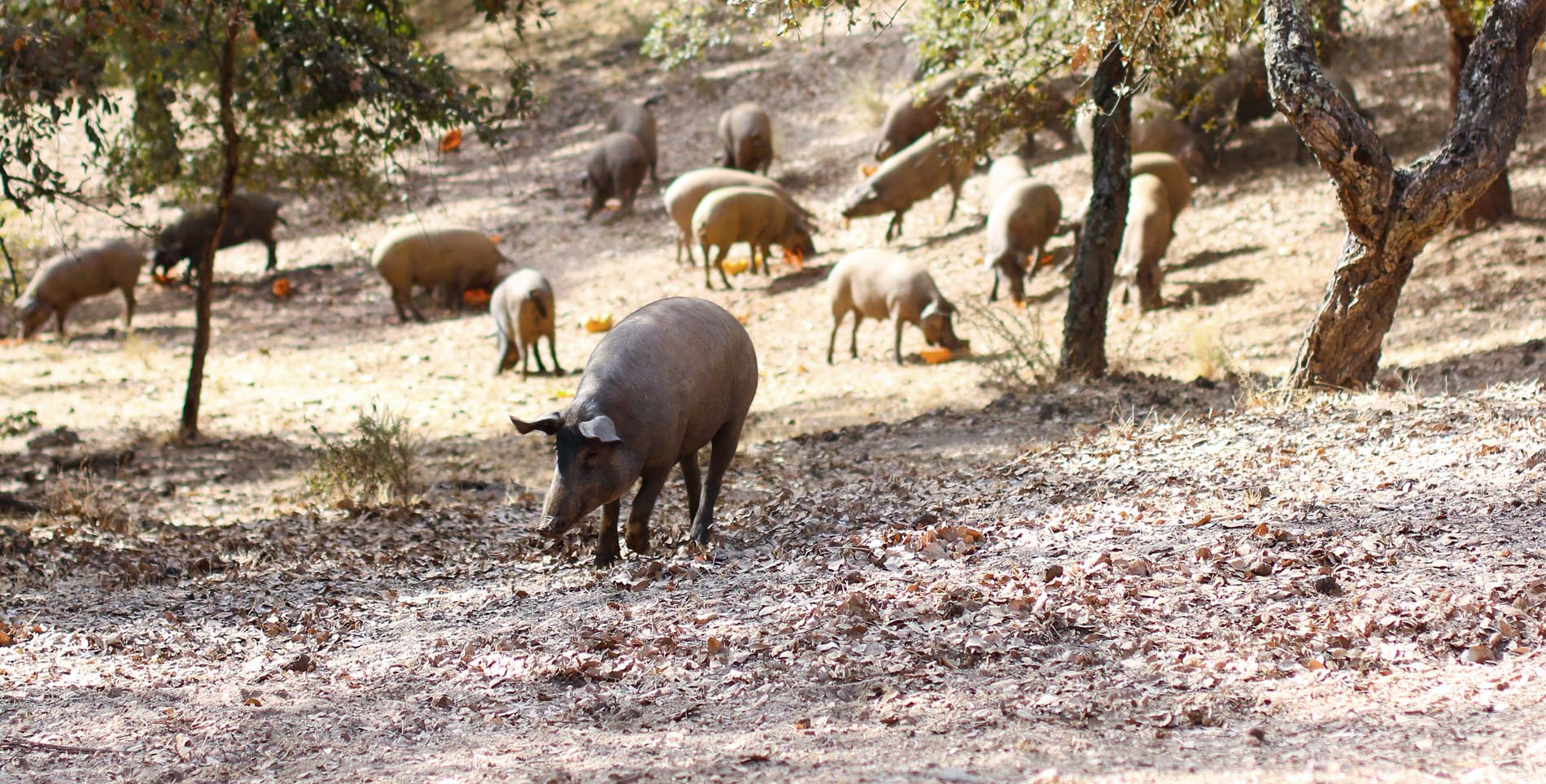

Our comments section is for members only.
Join today to gain exclusive access.